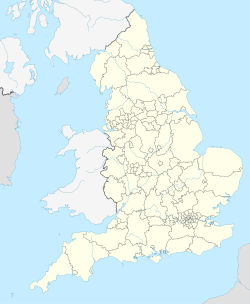Description
The stone is made from the local Devonian shale which has extensive feldspar veining, [3] and it is estimated to weigh around 16.5 tonnes. [1] It is 4.92 metres long [1] and stands to a height of just over 3 metres above ground level. [3] It stands on a low stone mound or cairn with a diameter of around 10 metres. [3] It is believed to be Late Neolithic or Early Bronze Age (around 2500-1500 BC). [1]
It fell over in 1945, and was re-erected in 1956 after a small excavation had been carried out. [3] The excavation showed that the stone stood in a setting of quartz pebbles below which were two small hollows. [1] Similar hollows at other sites have been found to contain human bone or ashes. [1]
The stone may have been associated with other Bronze Age ritual monuments in the area, including one other standing stone, [4] and a series of barrows that extend up to 4 miles (7 km) to the west. [3]
The stone is mentioned in antiquarian records as early as 1613, and was later adopted as a St Breock parish boundary marker. [3] The site is now in the care of the Cornwall Heritage Trust on behalf of English Heritage. [5]
This page is based on this
Wikipedia article Text is available under the
CC BY-SA 4.0 license; additional terms may apply.
Images, videos and audio are available under their respective licenses.

